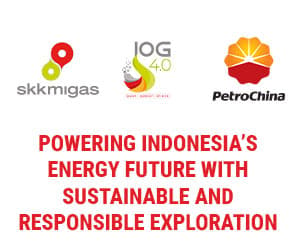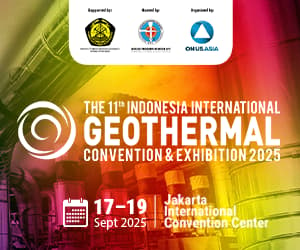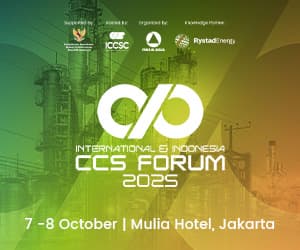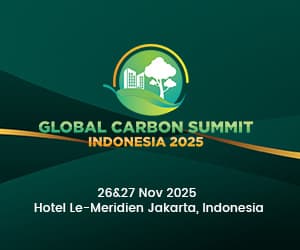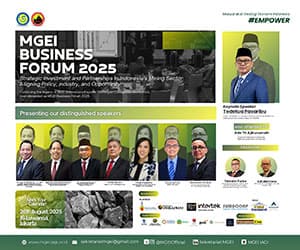By Pandu Setiabudi
Indonesia’s pledge to achieve net-zero emissions by 2060 is facing stiff challenges—especially in remote, resource-rich regions where nickel smelters, vital to the global green economy, remain deeply dependent on coal.
At the Energy Transition Summit Asia last month, a session titled “Spotlight on Indonesia – Transitioning from Coal, Reducing Mining Emissions and Relying on LNG” brought together industry experts, investors, and policymakers. The discussion laid bare the widening gap between the country’s climate ambitions and the operational needs of its nickel industry.
“We built coal power plants because they were the only available and economical option. But now we’re being asked to shut them down and rebuild with renewables. Who’s going to fund that?” said Liam Sian Choo, Sustainability Director, PT Trimegah Bangun Persada Tbk (Harita Nickel)
Operating on Obi Island in North Maluku—an area with no grid access, limited infrastructure, and weak solar potential—Harita Nickel, a major EV battery supplier, embodies Indonesia’s green paradox: producing clean-economy materials using dirty energy.
While the company has reduced emissions by nearly 5% from its 2022 baseline and targets a 30% cut by 2030, coal still dominates its energy mix. Limited sunlight restricts solar viability to just a few hours a day, and grid expansion is still years away. In the meantime, Harita relies on 910 MW of coal-fired power to run 12 Rotary Kiln Electric Furnace (RKEF) lines and six High Pressure Acid Leach (HPAL) lines—each with a 120,000-ton annual nickel capacity.
Liam said the company has decommissioned some coal units and is designing new heat recovery systems.
Emissions driven by energy-hungry smelting
According to the Ministry of Energy and Mineral Resources (MEMR), Indonesia had 54 active nickel smelters by the end of 2024. Only five use hydrometallurgy (HPAL); the rest rely on energy-intensive pyrometallurgy (RKEF).
In 2023, the nickel industry generated 170.2 million tons of CO₂-equivalent (CO₂e)—about 21% of Indonesia’s national emissions. Of that, RKEF smelters were responsible for a staggering 97.9% of emissions, with an intensity of 92.9 tCO₂e per ton of nickel. The remainder came from HPAL (1.1%) and mining operations (1%).
Power generation accounted for the majority of emissions—63.5%, or 107 million tons of CO₂e. Within smelters, it represented 64% of RKEF emissions and 42% of HPAL emissions.
RKEF’s high energy intensity (830.2 GJ/tNi-eq) compared to HPAL (92.7 GJ/tNi-eq) has led to a surge in captive coal power plants. Between 2017 and 2023, coal capacity for nickel smelters jumped from 2.5 GW to 10.4 GW for RKEF, and from zero to 0.6 GW for HPAL, according to WRI Indonesia.
Financing the transition
The continued expansion of coal-fired captive power—many projects still under construction—poses a major obstacle to Indonesia’s 2060 net-zero emissions goal. According to the National Development and Planning Agency’s (Bappenas) Nickel Industry Decarbonization Roadmap, the nickel sector alone will require an estimated USD 31.4 billion in capital to transition by 2045.
This financing gap reflects a broader national challenge. In January, the Ministry of Energy and Mineral Resources (ESDM) acknowledged that plans to begin early retirement of coal-fired power plants have been postponed due to a lack of secured funding. Minister Bahlil Lahadalia said donor institutions had failed to deliver on promised support, delaying progress.
“We were promised donor institutions would provide the funding, but where are they? So far, there’s nothing—zero,” Bahlil said.
The early retirement of coal plants is expected to require at least USD 4.8 billion in upfront financing. However, neither the government nor state-owned utility PT PLN has included retirement mechanisms in the latest Electricity Supply Business Plan (RUPTL). This underscores the uncertainty surrounding the flow of climate financing—despite a $20 billion pledge under the Just Energy Transition Partnership (JETP).
The JETP was launched in November 2022 during the G20 Leaders' Summit in Bali, with support from the International Partners Group (IPG), led by the United States and Japan, to support Indonesia’s shift to renewables. However, some reports indicate that the US withdrawal from the partnership has created uncertainty around the availability and timing of these funds, further complicating the financing landscape for early coal plant retirements and renewable energy investments.
While Indonesia’s 2025–2034 RUPTL outlines an ambitious plan to add 42 GW of renewable capacity with IDR 3 quadrillion in infrastructure investment, the majority of that funding is expected to come from Independent Power Producers (IPPs). Without investment certainty and credible financing channels, however, large-scale industrial transitions remain stalled.
“Long-term goals like net-zero 2060 must be supported by medium-term plans,” said Ewan Marshall, IFC’s Country Manager for Indonesia. “We need consistent regulations, fair risk-sharing, and space for private investment.”
Policy gaps and loopholes
Presidential Regulation No. 112/2022, which outlines the framework for renewable electricity procurement, sets a ceiling price for power sold to PLN by IPPs. However, many private developers view the cap as too low to ensure project viability.
“What we really need to worry about are captive coal plants, which remain unregulated,” said Arthur Simatupang, Chairman of the Indonesia Private Power Producers Association (APLSI).
While new coal plants are technically banned under the regulation, captive coal plants serving industrial facilities are exempt—leaving a major loophole that weakens decarbonization efforts. Arthur also pointed to the untapped potential of carbon capture and storage (CCS) and carbon markets. If properly regulated, power producers operating below emission thresholds could earn credits.
Yet, challenges remain. The existing electricity market—where PLN is the sole buyer—limits the monetization of renewable energy and green certificates (RECs).
“If monetized properly, carbon markets and RECs could be powerful incentives to move away from fossil fuels,” Arthur said.
Transitional fuels
As electricity demand from energy-intensive smelters continues to grow, liquefied natural gas (LNG) is emerging as a favored transitional fuel. While not carbon-free, LNG is considered cleaner than coal and faster to deploy in remote industrial zones.
Hendra Sinadia of the Indonesian Mining Association noted that LNG is already being used in a copper smelter in East Java and in several nickel smelters in Sulawesi. Its increasing adoption highlights the urgent need for practical, lower-emission alternatives amid delays in renewable infrastructure rollout.
The panel concluded that Indonesia’s energy transition must be nuanced and region-specific. As an archipelagic nation with widely varying infrastructure, policies must be flexible enough to address on-the-ground realities.
While the 2060 net-zero goal remains theoretically achievable, it will require targeted investment, strong incentives for clean technologies, and regulatory reforms that build investor confidence. “Real change hinges on accessible funding and practical technology,” concluded Harita Nickel’s Liam.
Editing by Reiner Simanjuntak


